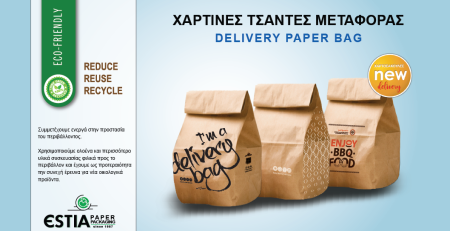Traditional mail may have been replaced by email, digital book devices have firmly entered the market and newspapers are betting big on their online versions. But paper is a material that has always appealed to be written on or read by humans. Therefore, since the books are not yet “endangered species” – nor they seem to be any time soon- paper is an important material of our daily life.
However, paper is made of trees and in order to have paper, we have to use it responsibly. Specifically, it has been estimated that twelve million trees are cut down each year to produce 600,000 tons of paper. In contrast, one ton of recycled paper corresponds to “saving” of approximately 17 trees.
It is known that a large percentage of the paper we use is made of recycled material. Unfortunately, most of us don’t know the journey the discarded newspaper makes – from the garbage bin until it reaches our hands again “transformed”. Let’s follow the odyssey of the paper together.
Recycling, of course, starts with us. Collect all the paper material that you do not need, such as newspapers, paper packaging, cardboard, magazines, envelopes, etc., and dispose of them in one of the special recycling bins in our neighborhood – you will probably find such bins outside of school units or in the nearest main street. It’s a simple move that we can easily add to our daily routine, helping our paper waste begin its “rejuvenating excursion”.
From the first “station” of the bin, the used papers are collected by the special trucks, which transport the material either to the recycling area, or to the warehouses of the old paper merchants, depending on who these trucks belong to.
In these areas, the preparation of recycling begins. The first step is to sort the paper, a process that is usually done by hand. Different types of paper are separated, as newsprint for example cannot be recycled to produce photo paper.
Next, the paper entries the industrial recycling units. It is necessary to separate the paper from the other materials usually by “centrifugation”. The material is fed into a machine and spun at high speed, until the fasteners, plastic elements, etc., are separated to the side, leaving the clean paper in the center.
Following comes… bathing. Paper enters special laundromats, so as to become ink- free. As soon as the paper is cleaned of the ink printed on it, it is put into a huge blender, where it is mixed with water and turned into a pulp. The resulting “pulp” is squeezed, dried and then rolled into large rolls, about one ton each. Recycled paper is ready to take on some useful form again.
A “secret” to recycled paper is its “seven-souled” nature. The same paper can be recycled a maximum of seven times, as its fibers become very weak. So often, during the recycling process, a quantity of “fresh”, derived from wood paper, is added to the used pulp.
Paper recycling, from what the evidence shows, has entered our lives for good. In particular, Europe has exceeded 50% in terms of paper recycling, while in Greece is still lagging behind, since the paper that ends up in the recycling bins constitutes approximately 35% of the paper we throw away.
If these rates increase, the benefits for the environment will not be few. First, it reduces the amount of paper produced from logging. At the same time, we “save” a lot of space from suffocating landfills, while investment and job prospects are created in the industry of recycling.
Finally, we are closing with the suggestion to do your own “home” paper recycling. It’s not too difficult, as long as you have a blender, white glue and a rectangular frame laid with a pantyhose. Follow the steps and you’ll have your own freshly recycled paper to use as you wish:
Cut the papers you don’t need into strips and soak them in water. After they have soaked, add a little more so that it is a few centimeters above the paper. Put the paper with the water in the blender and process it at low speed, until the liquid turns gray. Make sure the water is not too little to avoid damaging the blender.
Next, fill a basin with water and add two spoons of white glue. Put in the pulped paper and mix well. Place the pulp on the pantyhose frame and spread it evenly. Leave it in the sun to dry completely and your paper is ready, regenerated from its “fibers”.
For paper bags and supplies come to Estia Pack



